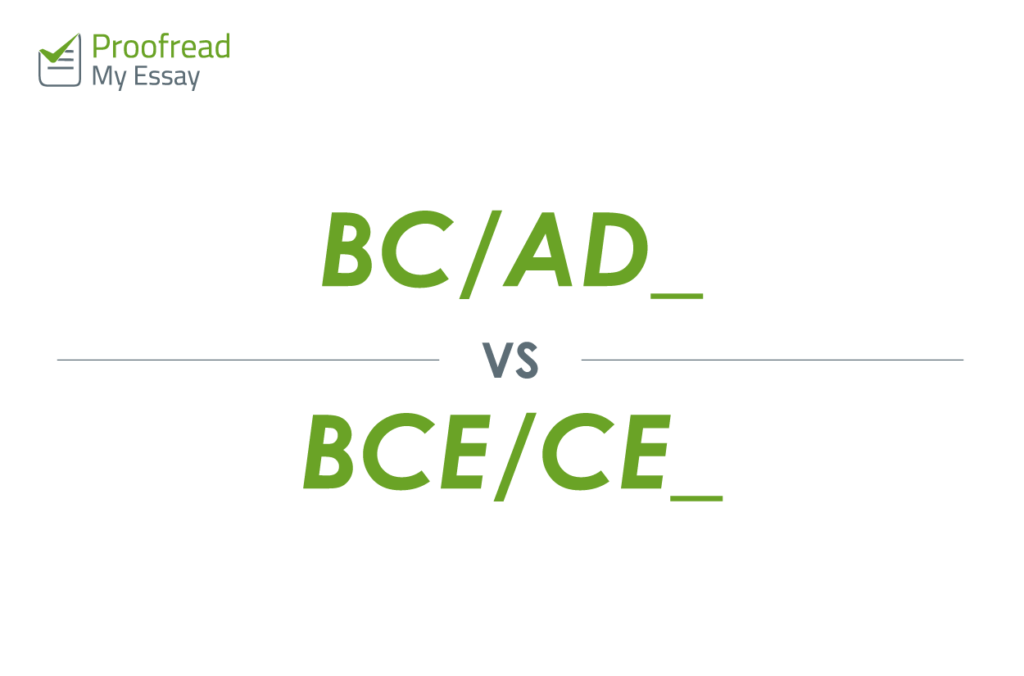In 1995 BC, Pharaoh Nebhepetre Mentuhotep II of Egypt died. In AD 1995, on the other hand, Coolio’s ‘Gangsta’s Paradise’ was released. These are quite different events, so it’s lucky that we have the whole ‘BC-AD’ distinction to help us avoid confusing when they happened.
However, although, ‘BC’ and ‘AD’ are traditionally used to indicate time periods, some now prefer ‘BCE’ and ‘CE’. So what is the difference? And which terms should you use in academic writing?
Why Do We Need These Terms?
The Christian Gregorian calendar is the most widely recognised way of recording years. This calendar uses the birth of Jesus as a starting point for a common dating system, so we need specific terms to indicate when we’re referring to something before this starting point.
This is especially important in a historical context. For example, while we’re unlikely to think that Coolio was recording music in the time of ancient Egypt, confusions could occur in an essay about the Roman Empire, which was founded in 27 BC and continued until AD 1453!
BC and AD
The terms ‘AD’ and ‘BC’ were coined around 1,500 years ago by Dionysius Exiguus, then popularised two centuries later by the Venerable Bede. Designed to identify the date of Easter, they stand for ‘before Christ’ and ‘anno Domini’ (Latin for ‘in the year of the Lord’).
Later, these terms were adopted by historians to distinguish between things that occurred either before (BC) or after (AD) the start of the Julian and Gregorian calendars.
Keep in mind that the positioning differs depending on the term used, as you might have noticed above. With ‘BC’, it should always be placed after the year:
The Roman Empire was founded in 27 BC.
With ‘AD’, however, the term comes before the year in question:
The Eastern Roman Empire finally fell in AD 1453.
Find this useful?
Subscribe to our newsletter and get writing tips from our editors straight to your inbox.
BCE and CE
‘BCE’ (‘before common era’ or ‘before current era’) and ‘CE’ (‘common era’ or ‘current era’ refer to the same periods as ‘BC’ and ‘AD’. The difference is that ‘BCE’ and ‘CE’ aren’t religious, so they offer a more secular approach to writing dates.
For example, we could rewrite the sentences above using ‘BCE’ and ‘CE’ as follows:
The Roman Empire was founded in 27 BCE.
The Eastern Roman Empire finally fell in 1453 CE.
The big stylistic difference here is that both ‘BCE’ and ‘CE’ come after the date.
(Image: Guriezous/wikimedia)
BC-AD or BCE-CE?
There are no strict rules about which terms to use, although some prefer to avoid the religious connotations of ‘BC’ and ‘AD’. The important thing is to use one form consistently throughout your essay.
Full Stops in Initialisms
You may see these terms written with full stops (i.e. ‘B.C.’ and ‘A.D.’ or ‘B.C.E.’ and ‘C.E.’). This is because American English sometimes recommends punctuating initialisms.
This isn’t usually the case in British English, however, so there’s no need to add full stops when writing these terms unless your university style guide recommends otherwise.
